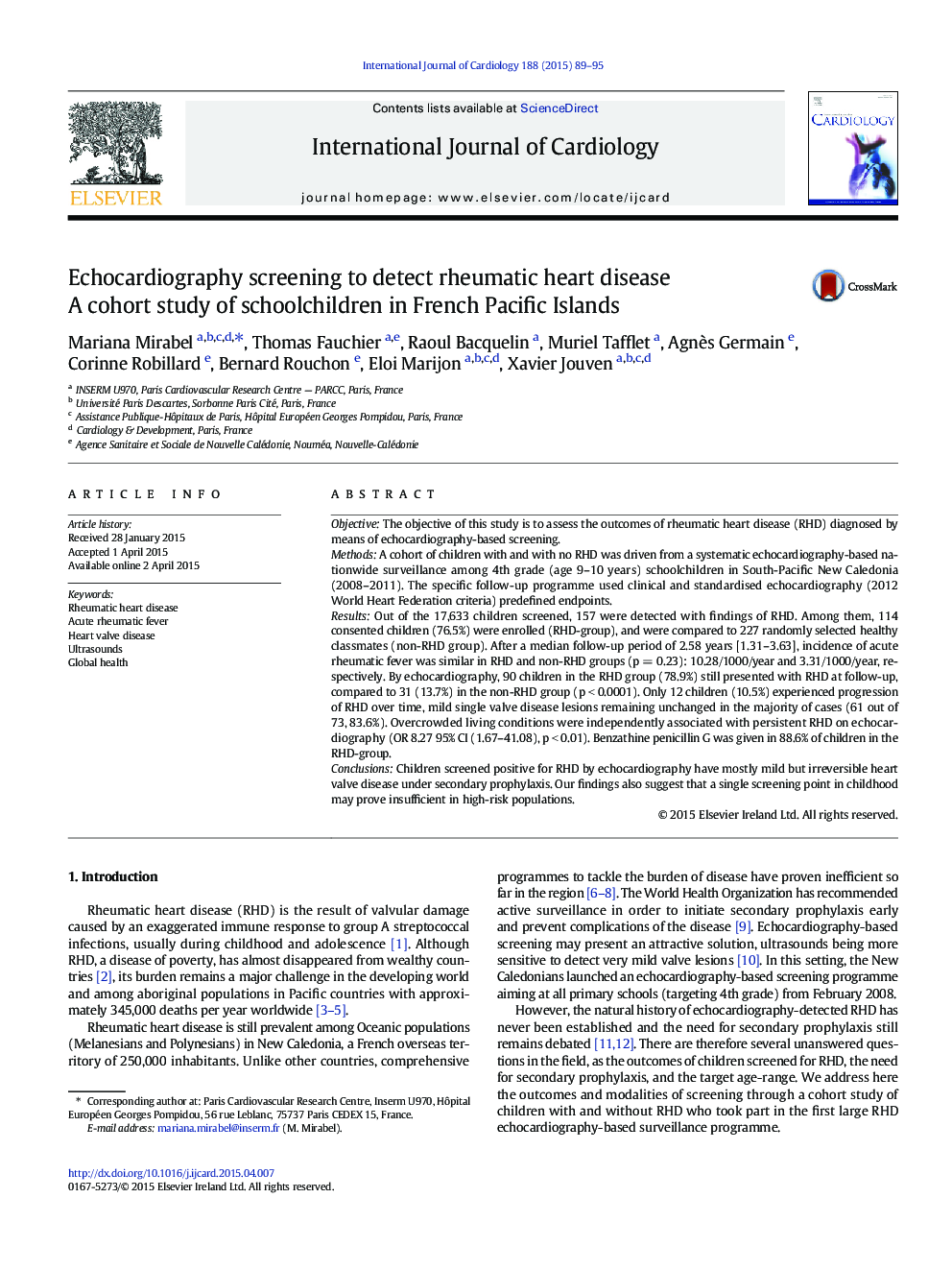| Article ID | Journal | Published Year | Pages | File Type |
|---|---|---|---|---|
| 5967272 | International Journal of Cardiology | 2015 | 7 Pages |
â¢Subclinical rheumatic heart disease often persists in children.â¢Valve disease remains often mild under secondary prophylaxis in young patients.â¢Serial screening in children at risk of rheumatic heart disease may be of interest.
ObjectiveThe objective of this study is to assess the outcomes of rheumatic heart disease (RHD) diagnosed by means of echocardiography-based screening.MethodsA cohort of children with and with no RHD was driven from a systematic echocardiography-based nationwide surveillance among 4th grade (age 9-10 years) schoolchildren in South-Pacific New Caledonia (2008-2011). The specific follow-up programme used clinical and standardised echocardiography (2012 World Heart Federation criteria) predefined endpoints.ResultsOut of the 17,633 children screened, 157 were detected with findings of RHD. Among them, 114 consented children (76.5%) were enrolled (RHD-group), and were compared to 227 randomly selected healthy classmates (non-RHD group). After a median follow-up period of 2.58 years [1.31-3.63], incidence of acute rheumatic fever was similar in RHD and non-RHD groups (p = 0.23): 10.28/1000/year and 3.31/1000/year, respectively. By echocardiography, 90 children in the RHD group (78.9%) still presented with RHD at follow-up, compared to 31 (13.7%) in the non-RHD group (p < 0.0001). Only 12 children (10.5%) experienced progression of RHD over time, mild single valve disease lesions remaining unchanged in the majority of cases (61 out of 73, 83.6%). Overcrowded living conditions were independently associated with persistent RHD on echocardiography (OR 8.27 95% CI (1.67-41.08), p < 0.01). Benzathine penicillin G was given in 88.6% of children in the RHD-group.ConclusionsChildren screened positive for RHD by echocardiography have mostly mild but irreversible heart valve disease under secondary prophylaxis. Our findings also suggest that a single screening point in childhood may prove insufficient in high-risk populations.
